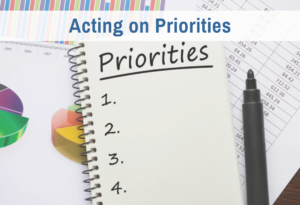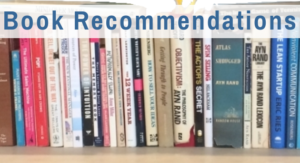For those of us who juggle several projects at work, a frequent question is, “which should I work on right now, in this chunk of time?” Sometimes the answer is obvious. Sometimes there’s a crisis, and the best you can do is triage the work.1 And occasionally there’s a lull, and you can work on the projects in any order.
But often, it remains an important question, with no obvious answer.
I used to get stuck making these decisions. I felt like I needed an in-depth goal-setting session to decide the priorities, but that would take too much time. The only alternative seemed to be “just pick one” to get something done now. I needed a better process to help me establish the day’s priorities in just a few minutes.
I finally figured out I needed to trigger latent knowledge about the tasks and their importance. There were facts I knew but wasn’t using. To access this hidden source of wisdom, I now ask myself two open-ended questions concerning my priorities to help sift out what matters:
What do I know?
What do I need to know?
I answer these two questions systematically, by spending about five minutes “thinking on paper” about them.2 As I lay out the facts, I activate additional knowledge that is relevant to the choice, and the best choice usually emerges.
For example, by answering these two questions, I was able to choose between writing this newsletter and writing a brochure. At first, both tasks seemed equally urgent. But when I laid out the issues, I recalled a deadline I hadn’t considered. This newsletter was the clear priority.
The subconscious is your storehouse of knowledge and conclusions. It holds detailed information about your priorities. But much of that information is latent. It is out of awareness until you activate it. By adding an extra step to the decision process you trigger latent knowledge that hadn’t occurred to you spontaneously. And then, you can incorporate this information into your thinking to make a better decision.
Although this process usually clarifies my priorities, sometimes it doesn’t. But even then, I get a clear benefit. I gain confidence that I have considered the most obvious issues. I feel free to stop trying to discover the “best” choice, and make a “good enough” choice now, instead.
Whether I identify a definite priority or just gain the confidence to move on without one, this five-minute thinking procedure helps me make the best use of my work time.
Notes:
1. See the newsletter on “Triage” from last year 9/17/07.
2. Here are the basic instructions for “thinking on paper”: Write down your thinking in full sentences as you’re doing it. Slow down your thinking to the speed of writing. For more in-depth instructions, see my 14-page pamphlet on the topic, available for $6.95.









0 Comments